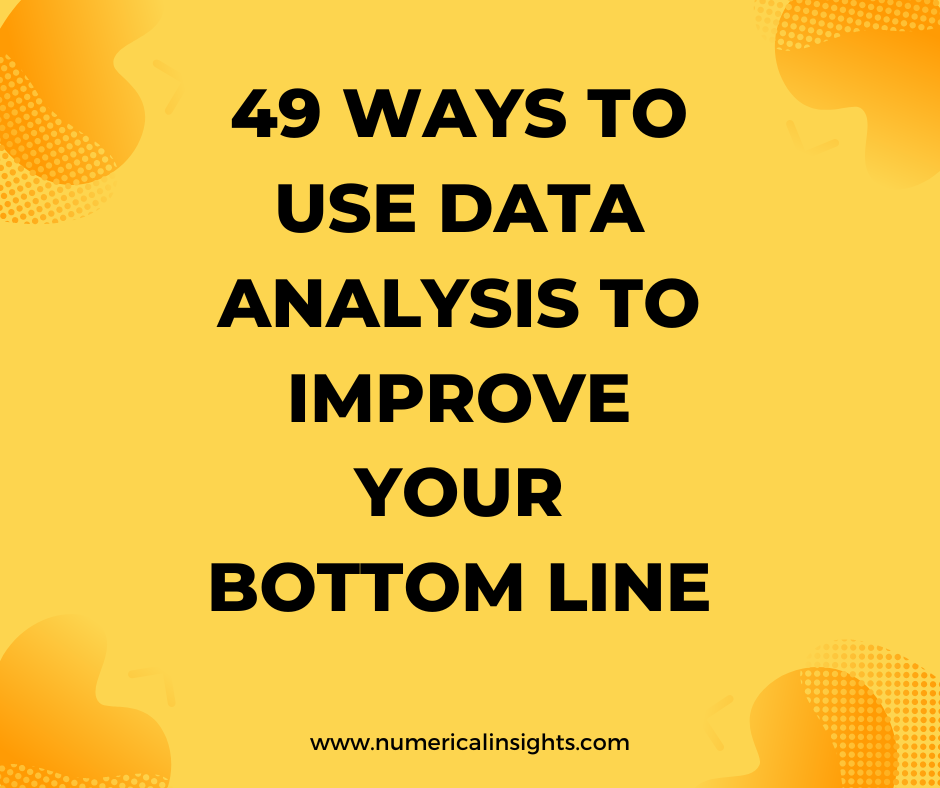Business Analytics
Business analytics is the process of using data to gain insights and make better business decisions. It involves analyzing historical data to identify patterns, trends, and root causes, and then using those insights to make data-driven decisions to improve a business.
Business analytics can be applied to:
Improve inventory management,
Increase gross margins on products,
Segment customer performance,
Assess sales performance by channel
Improve the customer experience, and
Many more applications!
Business analytics involves using a variety of tools and techniques including data management, data visualization, predictive modeling, data mining and forecasting.
The Value of Business Analytics
A 2013 Bain report found that companies using analytical techniques are actually:
Twice as likely to be in the top quartile of financial performance, and
Five times as likely to make decisions faster than their peers.
These analytical techniques aren’t complicated ones, but rather a systematic study of existing operational and financial data. These are studies that businesses rarely have time to execute themselves, but when they are conducted, either in-house or with external help, the improvement to the business can be substantial.
Analytical projects can help identify savings opportunities or opportunities to increase profitability. In a world where the intelligent use of data is a competitive advantage, those that aren’t equipped to analyze their data should establish a path to do so.
Why Choose Numerical Insights for your Business Analytics?
With over 25 years in data analysis, Numerical Insights has helped businesses evaluate their financial and operational data. These analyses are then used to make business decisions that:
Increase profitability,
Improve inventory management, and
Improve internal processes such as order management.
Tracey Smith has worked in engineering, supply chain and on the analytical side of HR. Having experience in these areas provides Ms. Smith with the ability to envision how to use data to improve an owner’s business in multiple ways. Ms. Smith helps businesses:
Understand where the money went when the business is struggling to turn a profit,
Know which products are contributing to the bottom line and which ones yield losses,
Identify the impact of current inventory management practices, and
Better manage cash flow through the understanding of how decisions impact cash.
Case Studies
-
You have a lot of inventory but find your best products are frequently out of stock. Click here to read the case study.
-
When you find you need to rebalance your sales channels. Click here to read the case study.
-
A distributor of finished goods in Chicago, Illinois was struggling to keep his business profitable. Despite substantial increases in sales over the past five years, at the end of each month, it was difficult for this owner to have enough cash to pay for his inventory.
Using the planning process presented in this document and with the data analysis services of Numerical Insights LLC, this business owner now understands where the cash went and has planned actions to improve the business’ cash flow situation. In the owner’s own words,
“Even that brief glimpse into what can be done with the data was enough to make me think that what's inside the black box can actually be decoded, and, gasp, understood?”
As a next step, Numerical Insights LLC is using data analysis to investigate the product drivers of profitability to assist the owner in modifying his product offering strategy.
Whether its analyzing customer demand patterns, factory production, inventory or internal processes, Numerical Insights can help identify areas of improvement by providing visibility into your business data using the latest business intelligence tools.
The possible application of analytics to any business is vast. Here are just a few project examples.
Determine which products or customers contribute the most to your profit,
Assess which zip codes have yielded the greatest customer base,
Conduct a spend analysis for purchasing department cost savings and supply base consolidation, and
Historical product demand patterns and variation analysis (volatility of ordering).
Let's Connect
We can help you use data to answer key business questions. To start a conversation, click here for our Contact Us page.













